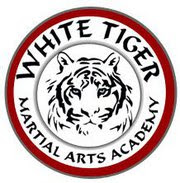KYOKUSHIN
The northern kata
from the Shuri-te tradition of karate,
drawn from Shotokan karate
Shuri Te
Shōrin-ryū,
Shotokan,
Northern Kata
Taikyoku sono ichi
Taikyoku Sono Ni
Taikyoku Sono San
The Taikyoku kata were originally created by Gichin Funakoshi, founder of Shotokan karate
Pinan Sono Ichi
Pinan Sono Ni
Pinan Sono San
Pinan Sono Yon
Pinan Sono Go
Naihinchi
Bassai
Kanku
Sushiho
The 5 Pinan katas, known in Shotokan as Heian, were originally created in 1904 by Ankō Itosu, a master of Shuri-te and Shorin ryu, teacher to Gichin Funakoshi
Pinan translates as Peace and Harmony
Naihinchi - a very old Okinawan kata, known as Tekki in Shotokan. It is generally classified as belonging to the Tomari-te traditions. The name Tekki means "iron horse". Naihanchi means "internal divided conflict".
It was originally removed from the kyokushin syllabus in the late 1950s, but was reintroduced into some kyokushin factions after Oyama's death
Bassai - A very old Okinawan kata the name Bassai or Passai translates to "to storm a castle".
It was originally removed from the kyokushin syllabus in the late 1950s, but was reintroduced into some kyokushin factions after Oyama's death
Kanku - Some organizations have removed the "Dai" from the name, calling it only "Kanku", as there is no "Sho" or other alternate Kanku variation practiced in kyokushin.
The Kanku kata was originally known as Kusanku or Kushanku, named after a Chinese martial artist who brought it from Okinawa in the 16th century.
Kanku translates to "sky watching".
Sushiho - greatly modified version of the old Okinawian kata that in Shotokan is known as Gojushiho,
The name means "54 steps", the number or moves in the for, and a symbolic number in Buddhism.
Sokugi Taikyoku sono ichi
Sokugi Taikyoku sono ni
Sokugi Taikyoku sono san
Unique to Kyokushin
Three kata were created by Masutatsu Oyama to further develop kicking skills and follow the same embu-sen as the original Taikyoku kata.
Sokugi literally means Kicking, while Taikyoku translates to Grand Ultimate View.
They were not formally introduced into the Kyokushin syllabus until after the death of Oyama.
The list of Shotokan Kata that do not appear as the Northern Kata is extensive:
Enpi
Hangetsu
Jion
Jitte
Ji'in
Tekki nidan and Tekki sandan - the next two after Tekki/Naihinchi
Bassai shō
Kankū shō
Chinte
Unsu
Sōchin
Wankan
Gankaku
Meikyō/Rōhai
Nijūshiho
Gojūshiho shō and Gojūshiho dai - the Sushiho kata is so modified that is neither the Sho or Dai versions of Gojushiho - an explanation is that Oyama did not learn this Kata properly or did not remember enough of it, so developed a new form based on the 54 hand principle, adding different techniques, while keeping the concept and spirit
